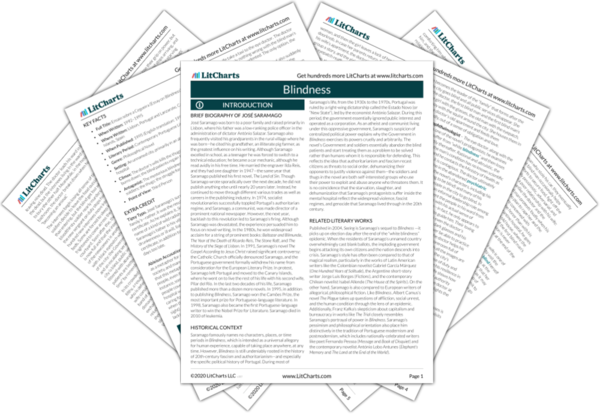This important downtown neighborhood, where many financial and political decisions with profound social impacts were probably made, has been turned into housing for homeless blind residents who probably do not even know what street they are living on. Not only are social distinctions overturned, then, but this happened just like the bankers’ backroom decisions and, according to the narrator, like all origin stories—secretly, even though “everyone knows what happened.” Indeed, the story that the man with the eyepatch tells shows how all distinctions of class and power became irrelevant when everyone lost their sight, but people clearly did not know how to adapt: like the thugs in the hospital, they continued to seek out money even though they knew it would not be good for anything.
